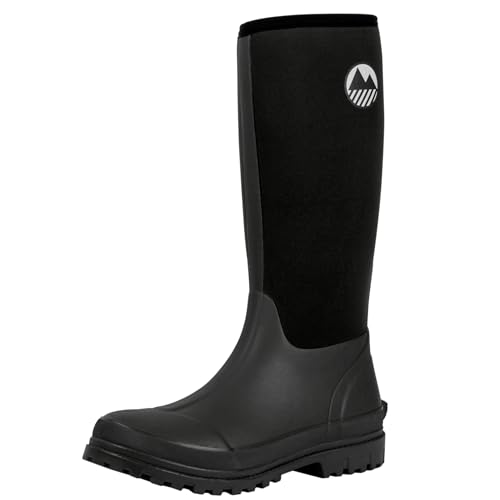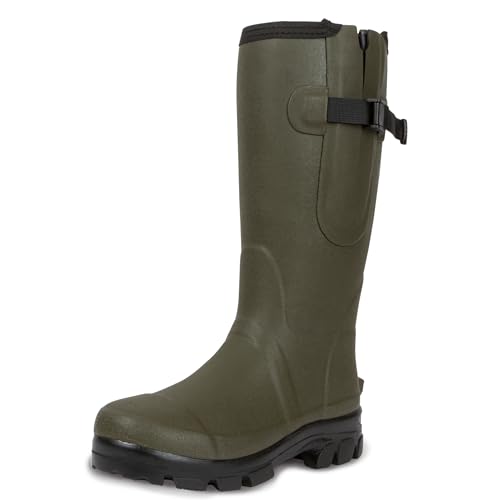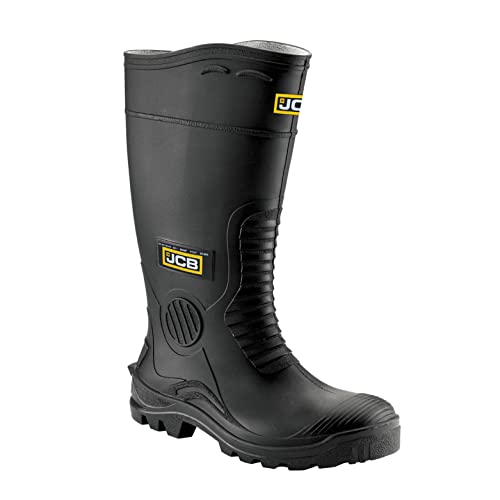Understanding Men’s Wellington Boots: What They Are and Why You Need Them
What Are Wellington Boots?
Wellington boots, often simply known as wellies, are a type of waterproof footwear that originated from the desire for stylish yet practical footwear, primarily popularised by the Duke of Wellington. Made to keep your feet dry and comfortable in wet and muddy conditions, they are perfect for outdoor activities such as gardening, hiking, or simply enjoying a rainy day. If you regularly find yourself in environments where moisture or muck is a concern, having a reliable pair of wellington boots is essential.
Why You Should Consider Them
Imagine stepping out into a downpour to walk your dog or navigate through a puddle-filled park. Wellington boots not only protect your feet from water but also prevent mud from ruining your shoes. Their durable construction allows for extended use, making them an economical choice especially if you enjoy spending time outdoors or on farms. In addition, the variety of styles available means you don’t have to compromise on looks when choosing functionality.
Choosing the Right Material: Rubber vs. PVC and More
Different Types of Materials Used
When it comes to men’s Wellington boots, the most common materials you’ll come across are rubber and PVC, each with its advantages. Rubber boots are renowned for their excellent flexibility and durability, making them ideal for various outdoor activities. They often have better insulation properties, keeping your feet warm in colder weather. On the other hand, PVC is lighter and may be easier to clean, which could be an attractive option if you need something quickly washable after muddy use.
Other Material Options
Besides rubber and PVC, some wellies are made from neoprene or a combination of materials. Neoprene is excellent for insulation and adds comfort, making these boots suitable for colder climates. It’s also waterproof, so you can rely on it during wet conditions. Choosing the right material really depends on your lifestyle—if you spend a lot of time in cold, wet conditions, rubber or neoprene may be the best choice, while PVC might be perfect for less intensive use.
Finding Your Perfect Fit: Tips for Size and Comfort
Why Fit Matters
Selecting the right size for your welly boots is crucial for comfort and effectiveness. Ill-fitting boots can lead to discomfort during wear and might compromise their waterproof capabilities. The best way to ensure a good fit is to measure your feet and check the sizing guide provided by the manufacturer.
Tips for Sizing and Trying on Boots
When trying on Wellington boots, it’s advisable to wear the socks you would typically use with them. This helps in assessing how they feel with a full sock thickness. Additionally, ensure there’s enough space for your toes to move around comfortably without being too loose where they might slip off. Pay attention to the width of the boot as well—wider styles are beneficial for those with broader feet.
Style and Functionality: How to Pick the Best Design for Your Lifestyle
Styles to Consider
Wellington boots come in various styles to suit different tastes and of course, specific uses. If you’re looking for something classy for garden parties, opt for designs with a sleek finish or trendy patterns. For practical use in muddy fields or construction sites, a more rugged design might better serve your needs.
Balancing Functionality with Aesthetics
When selecting a style, think about where you plan to wear your boots most often. For instance, if you frequently hike or walk in the countryside, a taller boot may provide better protection against mud and water. Conversely, if you want something easier to slip on and off, shorter designs can be more convenient. Balancing style with functionality based on how you plan to use them will help ensure you make the right choice.
Maintenance Made Easy: Keeping Your Wellington Boots in Top Condition
Simple Cleaning Tips
To extend the lifespan of your Wellington boots, regular maintenance is key. After every use, especially in muddy conditions, rinse off any dirt or mud with clean water. Using a soft brush can help remove stubborn debris while ensuring you don’t scratch the surface. If you desire extra cleanliness, mild soap can be used.
Storage and Care Practices
Proper storage is just as important as cleaning. Avoid leaving your boots in direct sunlight or near heat sources, as this can cause the material to degrade or warp. Instead, store them in a cool, dry place. Using boot trees can help maintain their shape and prevent creasing. If you treat them occasionally with a silicone-based spray, it can help maintain their waterproofing capabilities and prevent cracks from developing.

































